The amazing history of the snowmobile – Polaris Industries, from straw choppers to one of the world’s leading snowmobile manufacturers.
As I’ve covered in the first five parts of this History of the Snowmobile series, there were many snow traveling vehicles built before the first Polaris, but Polaris was definitely one of the most impactful on the industry.
Who Built the First Polaris Snowmobile, David Johnson or Edgar Hetteen?
Many snowmobile enthusiasts consider Edgar Hetteen to be the inventor of the Polaris snowmobile (I have even heard some claim him to be the inventor of the snowmobile). Edgar’s name is even on a plaque in the Snowmobile Hall of Fame in Eagle River, Wisconsin as “The Father of the Snowmobile.”
However, it was David Johnson, Edgar’s brother-in-law, not Edgar, that built the first Polaris snowmobile. Edgar does deserve much of the credit for making Polaris, and the snowmobile, popular, though.
From OK Welding to Hetteen Hoist & Derrick
At the age of fourteen, Edgar went to work for his uncle, Oscar Hetteen, at the OK Welding Company in Roseau, Minnesota. At age Nineteen he left OK Welding, and branched out into auto body repair, mechanical repair, and became somewhat of an inventor. In 1944, at the age of twenty-four, he started Hetteen Hoist & Derrick, using his past years of experience to build a hoist of his own design.
Polaris Industries Straw Choppers
Over the next ten years the company would build many different machines and farm implements, such as cultivator hitches, fertilizer spreaders, grain boxes, and loading equipment. He even tried his hand at building a four-wheel drive ATV. It was during this time that Edgar brought in his younger brother, Allan, and brother-in-law, David Johnson to help with the expanding workload.
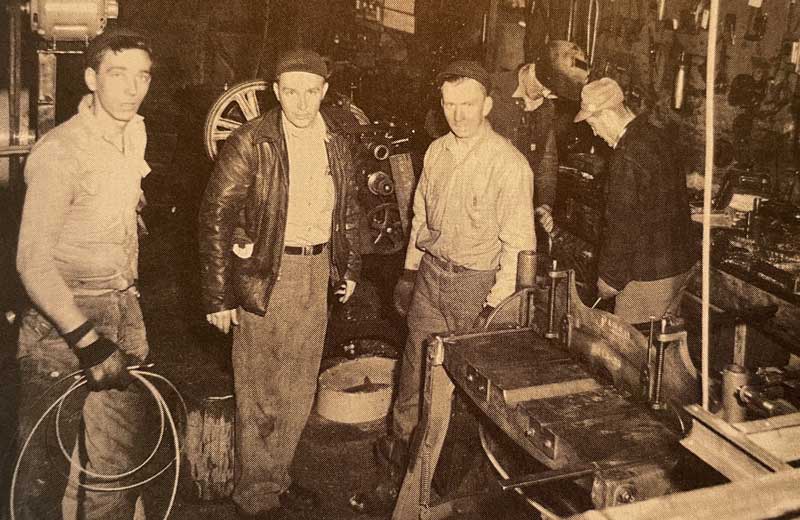
In the late 40’s the company started building what would become the company’s bread and butter machine; a straw chopper that would pull up straw from the field, pulverize it, then spread it out as a compost to return the nutrients back into the soil. This was the company’s greatest success to date. In the Spring of 1954, the company name was changed to Polaris Industries.
Building the First Polaris Snowmobile From Scratch
It was in the Winter of 1955, while Edgar was on a trip to California, that David decided to try his hand at a snow traveling vehicle. With help from Allan, and two other Polaris employees, he fashioned a drive track system using parts from a grain elevator.
Cleats were welded to a steel roller chain that ran around drive sprockets front and rear, this was mounted to a framework that served as the base of the machine. A boat shaped cab was attached to the front of this frame. A steering system was employed using a steering wheel mounted to a shaft, along with sprockets and a chain to turn the spindles, which had skis made from a car bumper mounted to them.
A Briggs and Stratton engine, sourced from a local hardware store, was used to power the motor toboggan. It took some experimenting and modifications to make this first sled go, but they did get the bugs worked out before Edgar got back from his trip.
Edgar Hetteen Miffed at Snowmobile Idea
Returning from California, Edgar was not happy seeing what David had built. “Anger isn’t the proper word to describe my emotions, but I certainly was miffed at my long-time friend and brother-in-law. I was feeling many emotions – confusion, bewilderment, perhaps dismay.”
After his initial reaction, Edgar ignored the machine, while David continued to work on it, eventually he became drawn to it.
First Polaris Snowmobile Sells for $465
One day, when Edgar came into the shop, he noticed that the motor toboggan was gone. It turned out that David had sold it to Pete Peterson, the owner of the lumber yard across the street from the shop. Pete had bought the first Polaris snowmobile for $465. Edgar realized that there might be a market for these machines.
A second motor toboggan was being built for Allan Hetteen at this time. A man from the North West Angle, the farthest point north in Minnesota, had heard about this motorized snow traveling machine that Polaris Industries was building, and wanted one for himself.
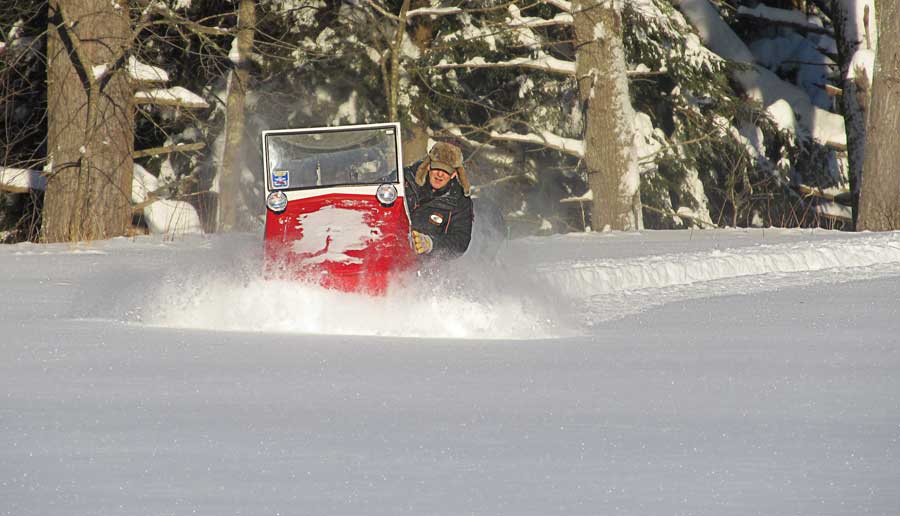
Harley Jensen came to David and Edgar while Allan was out delivering straw choppers, and asked if he could buy one. David told him that they would have to build one for him, and that that would take some time. Edgar volunteered that they had one almost done, and offered Harley that machine, it would be delivered to the North West Angle when complete.
The machine was quickly finished and delivered while Allan was still out of town. Harley Jenson bought the second Polaris snowmobile for $700. Edgar really started to see the value in these machines, and Polaris Industries was now in the snowmobile business.
Challenges of Building Dealer Network
Edgar, now a staunch advocate of the snowmobile, started canvasing for a dealer network to sell these new machines. He started with the farm implement dealers that Polaris had been selling straw choppers and other equipment to already, but none of these business owners saw the value in a snow traveling machine. But Edgar would not give up.
During a visit to his friends Rudy and Bessie Billberg in Alaska, Edgar, and his wife, met a man named Sig Wien. Sig, it turned out, was the owner of Wien Air Alaska. Sig told Edgar that he had a friend in Point Barrow, Alaska named Tommy Brower, that he was sure would be interested in becoming a Polaris dealer. He also volunteered to have Edgar and one of his machines flown to Point Barrow to meet Mr. Brower.
The trip was made, and after meeting Tommy with the machine, and a quick demonstration, a deal was struck and Polaris Industries had their first Polaris Snowmobile dealer. Many more were to follow.
Investors Pass on Polaris Sno-Traveler
The early Polaris snowmobiles were called Pol-Cats, and then Sno-Cats, but soon the name Sno-Traveler became the standard. And while things were moving forward with a dealer network and the production of the Polaris Sno-Traveler, another problem arose: the board of directors for Polaris Industries.
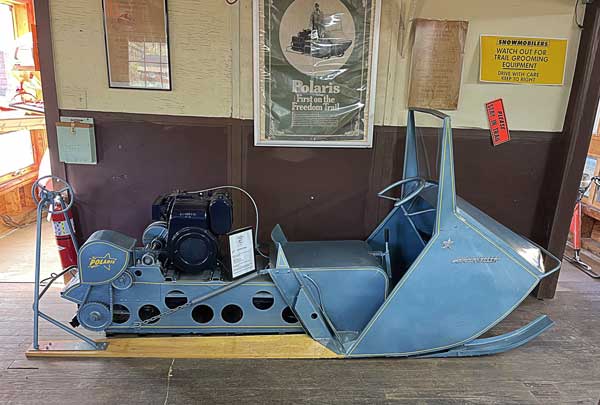
To secure a $40,000 investment for Hetteen Hoist & Derrick, Edgar had to agree to two board members of the investors choosing. Unfortunately, these two board members wanted nothing to do with snowmobiles and wanted the company to concentrate on straw choppers and other farm implements. They felt that that was where profits lie, not some frivolous snow traveling contraption.
Polaris Sno-Traveler Conquers Alaska Wilderness
Edgar, Allan, and David, however, felt that the future of Polaris Industries was in snowmobiles. So, to prove that snowmobiles were a viable commodity, Edgar planned an Alaskan excursion from western Alaska to Fairbanks.
On March 4, 1960, Edgar Hetteen, friends Rudy and Bessie Billberg, and Polaris employee Earling Faulk left Bethel Alaska on three Polaris Sno-Travelers for a 1,200-mile journey across Alaska to Fairbanks.
During this twenty-one-day trip, the group encountered some of the worst conditions imaginable; high winds, deep snow, blinding blizzards, sand, rocks, steep drops in terrain, unsafe ice on the river, and extreme cold were common.
The group mostly slept in tents, but found shelter in unoccupied hunting cabins, and the homes of kind strangers when possible. An engine on one of the Sno-Travelers had to be rebuilt on the trail.
On the evening of March 24, the group was led into Fairbanks by two men from the Polaris dealer in Fairbanks, they were greeted by members of the chamber of commerce, civic leaders, and even Miss Alaska. The group had done it, they proved that the Sno-Traveler could conquer winter travel.
Edgar Hetteen Leaves Polaris
Shortly after returning from his Alaska trip, Edgar realized that he could no longer work with these two board members. He sold his manufacturing rights for the snowmobile to Superior Separator Company of Hopkins, Minnesota, appointed Allan Hetteen president of Polaris Industries, and left the company that he built.
Edgar moved to Alaska, and Polaris Snowmobiles continued on without him. He would come back to Minnesota later and start another snowmobile company, but more on that in another article.
History of the Snowmobile – Polaris Industries
The Sno-Traveler turned out to be a great success for Polaris, but sales of rear-engine snowmobiles started to falter with new light weight front engine snowmobiles being built by other companies. In 1964 Polaris brought another model to the line called the Comet, to compete with the lighter snowmobiles. This model turned out to have many problems, and the company almost went bankrupt.
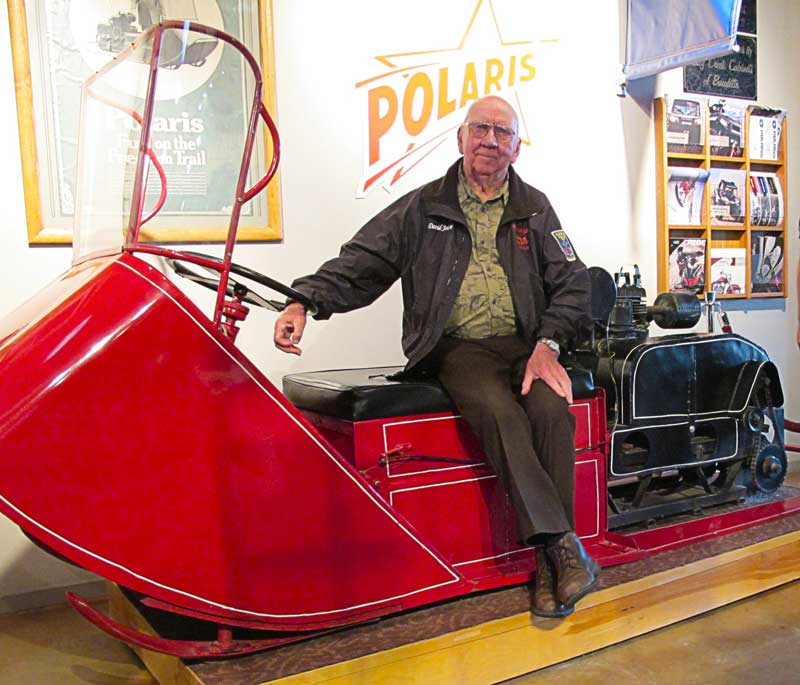
The engine was problematic, the clutch system weak, the track worked poorly in soft snow, gas tanks cracked, and exhaust pipes leaked from vibration. Many of these sleds were returned to the manufacturer as unsatisfactory. The problem was so bad that David Johnson joked “We made 400 units and 500 of them have been returned.”
1965 Polaris Mustang Saves Company From Financial Ruin
The 1965 Mustang was a sales success and saved the company from financial ruin. Polaris also badge-engineered snowmobiles for other companies: Sears and Roebuck, Larson, Homelite, and Viking were just a few of the sleds selling models manufactured by Polaris.
In 1968 the board of directors sold the company to Textron Inc. of Rhode Island. Allan Hetteen was killed in a farming accident in 1973. In 1981 the company was bought back from Textron by a management group led by Polaris president W. Hall Wendel.
Edgar Hetteen passed in February 2011, at the age of 90. At age 90, David Johnson was still riding up to 2,000 miles in a season, David passed in 2016 at the age of 93. Through ups and downs, the company that these men built is still running strong.
If you would like to read more about David Johnson, the March 2014 SnowGoer magazine has an excellent article in it, written by John T. Prusak. The book Breaking Trail, written by Edgar Hetteen, tells the story his life’s works and adventures, well worth reading.
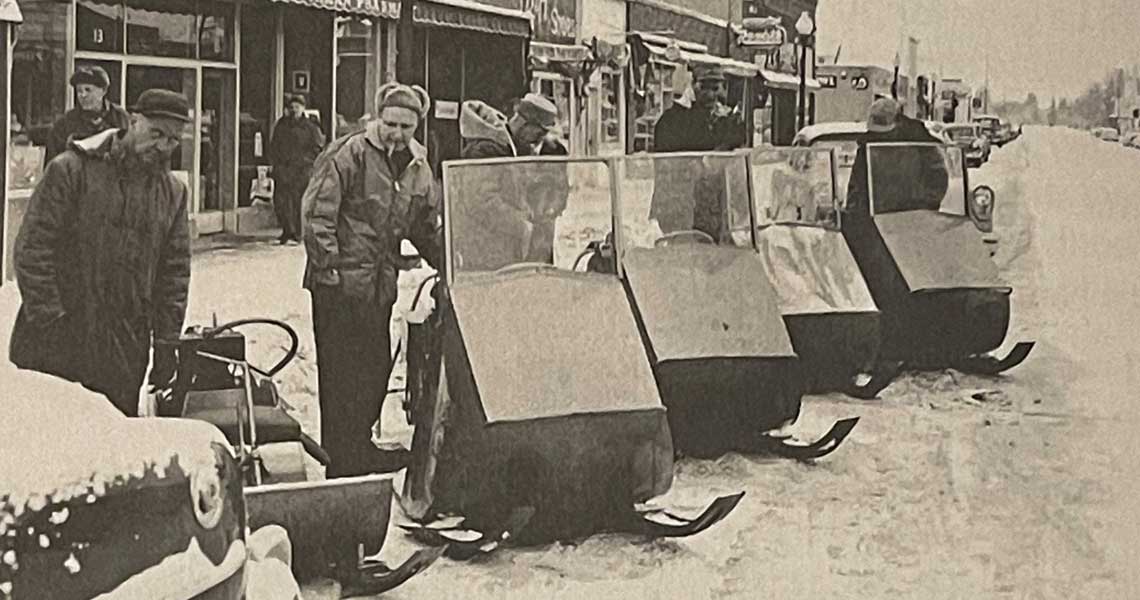
You must be logged in to post a comment.